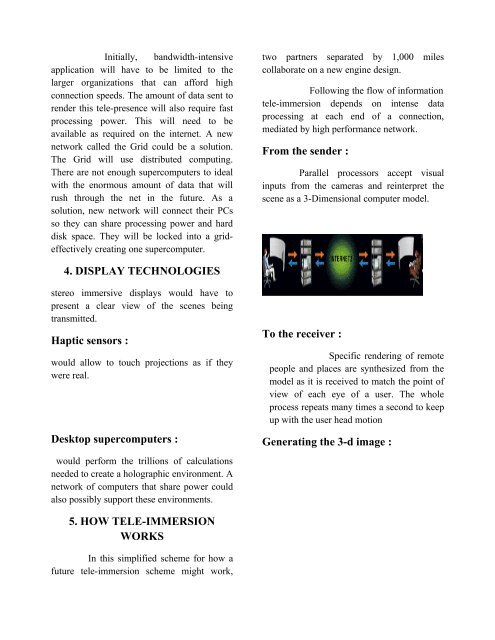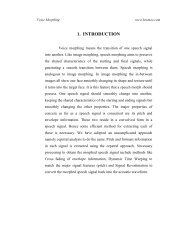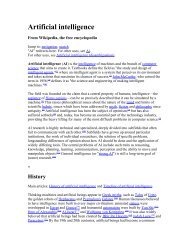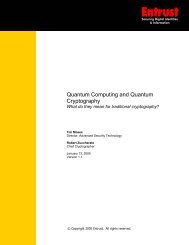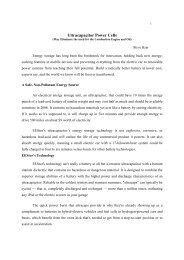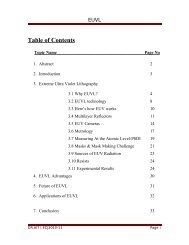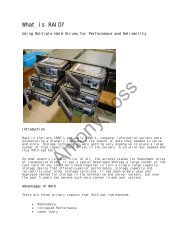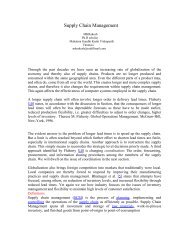Tele Immersion Full Seminar Report.pdf - 123SeminarsOnly
Tele Immersion Full Seminar Report.pdf - 123SeminarsOnly
Tele Immersion Full Seminar Report.pdf - 123SeminarsOnly
You also want an ePaper? Increase the reach of your titles
YUMPU automatically turns print PDFs into web optimized ePapers that Google loves.
Initially, bandwidth-intensive<br />
application will have to be limited to the<br />
larger organizations that can afford high<br />
connection speeds. The amount of data sent to<br />
render this tele-presence will also require fast<br />
processing power. This will need to be<br />
available as required on the internet. A new<br />
network called the Grid could be a solution.<br />
The Grid will use distributed computing.<br />
There are not enough supercomputers to ideal<br />
with the enormous amount of data that will<br />
rush through the net in the future. As a<br />
solution, new network will connect their PCs<br />
so they can share processing power and hard<br />
disk space. They will be locked into a grideffectively<br />
creating one supercomputer.<br />
4. DISPLAY TECHNOLOGIES<br />
stereo immersive displays would have to<br />
present a clear view of the scenes being<br />
transmitted.<br />
Haptic sensors :<br />
would allow to touch projections as if they<br />
were real.<br />
Desktop supercomputers :<br />
would perform the trillions of calculations<br />
needed to create a holographic environment. A<br />
network of computers that share power could<br />
also possibly support these environments.<br />
5. HOW TELE-IMMERSION<br />
WORKS<br />
In this simplified scheme for how a<br />
future tele-immersion scheme might work,<br />
two partners separated by 1,000 miles<br />
collaborate on a new engine design.<br />
Following the flow of information<br />
tele-immersion depends on intense data<br />
processing at each end of a connection,<br />
mediated by high performance network.<br />
From the sender :<br />
Parallel processors accept visual<br />
inputs from the cameras and reinterpret the<br />
scene as a 3-Dimensional computer model.<br />
To the receiver :<br />
Specific rendering of remote<br />
people and places are synthesized from the<br />
model as it is received to match the point of<br />
view of each eye of a user. The whole<br />
process repeats many times a second to keep<br />
up with the user head motion<br />
Generating the 3-d image :


